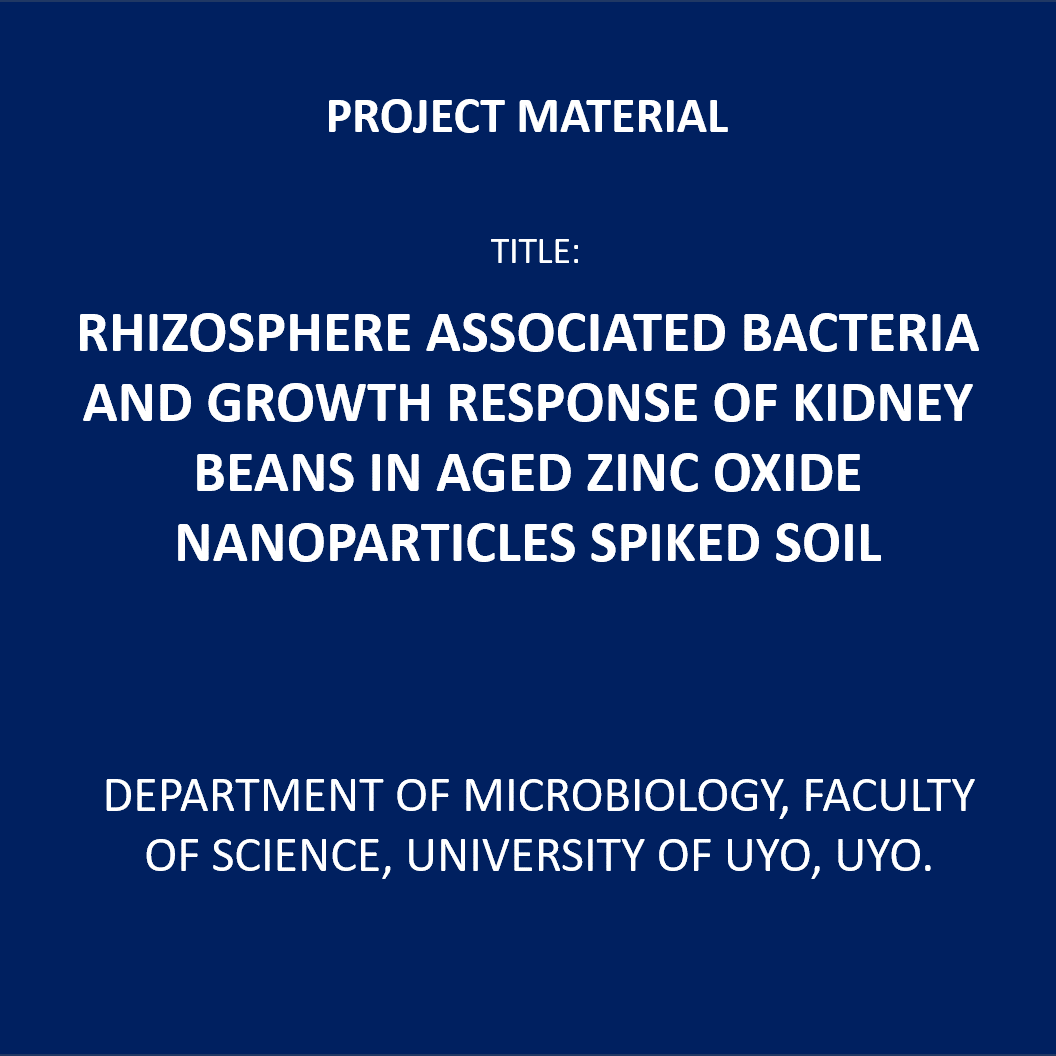No products in the cart.
Rhizosphere Associated Bacteria and Growth Response of Kidney Beans in Aged Zinc Oxide Nanoparticles Spiked Soil
₦10,150.00
ABSTRACT
The effect of ZnO nanoparticles (99%, 30nm) on seed germination and microorganisms in the rhizosphere of the kidney beans was evaluated using standard microbiological and analytical methods. The results indicate varying effects on the physicochemical properties in relation to the soil type. The mean log total heterotrophic bacterial count and standard error in the soil sample was: 6.38 ± 0.09 and 7.34 ± 0.16, 6.11 ± 0.05 & 6.79 ± 0.16, 6.03 ± 0.01 & 6.76 ± 0.07, 5.99 ± 0.03 & 6.94 ± 0.06, 5.99 ± 0.09 & 6.82 ± 0.21 and 5.72 ± 0.04 & 6.85 ± 0.03, 5.99 ± 0.05 & 6.46 ± 0.05 at varied concentrations (what were the concentrations?) respectively. A total some of 17 organisms identified were members of the genera Pseudomonas, Xanthobacter, Enterobacter, Bacillus, Nitrosomonas, Agromyces and Rhizobium.
Keywords: Phaseolus vulgaris, Zinc oxide nanoparticles, bacteria, rhizosphere, soil.
Background of the Study
Zinc is one of the nutrients needed by plants in small quantities for growth and metabolic processes. Zinc plays a significant role in plant resistance against disease, photosynthesis, cell membrane integrity, protein synthesis, pollen formation and enhances the level of antioxidant enzymes and chlorophyll within plant tissues (Hussain, 2018).
In Agriculture, most soils contain adequate nutrients needed for crop production but in some cases, this is not the case. Some soils that have had their top part removed and are low in organic matter, and this is really rampant in temperate climate areas. This inevitable complication led to the introduction of the use of nanotechnology into agriculture. Nanotechnology, a field of research and innovation concerned with the use of nanomaterials, has proven its potential to help solve most of the problems (citation required).
Zinc oxide (ZnO) nanoparticles have unique physical and chemical characteristics which are different from large particles of the same material, due to their extremely small size, higher specific surface area and surface reactivity. In the past few decades, engineered ZnO nanoparticles have been used in different industries and for consumer production due to the unique properties mentioned above. Most nanoparticles are exposed to the soil environment through the application of waste and sewage sludge (citation required).
Introduction is scanty
No product has been found!
